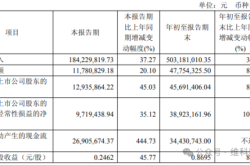Unitree's 'Humanoid Robots and Quadruped Robots' Emerge as the New Darling of Exhibition Marketing
![]() 03/17 2025
03/17 2025
![]() 547
547
Produced by | He Xi, Typeset by | Ye Yuan
The realm of robotic applications is continually expanding.
In recent years, the rapid advancement of AI technology has spurred continuous breakthroughs in robotic technology. This acceleration in technological innovation has widened the scope of robotic applications, extending beyond industrial manufacturing, warehousing, and logistics to encompass exhibition marketing, medical care, and household use.
Today, let's delve into the application of humanoid robots and quadruped robots in exhibitions, alongside the author's insights on their large-scale deployment.
01
Starting with Unitree's 'Yangko Dance' humanoid robots, which stole the show during the Spring Festival Gala
On the stage of the 2025 Spring Festival Gala, Hangzhou Unitree Technology's humanoid robot H1 shone brightly in the 'Yangko BOT' segment. Dressed in vibrant padded jackets and holding handkerchiefs, these robots performed the Yangko dance alongside human dancers, moving in perfect unison and fluidity, captivating the audience with the charm of the dance. Their endearing and diligent image resonated deeply with viewers, leading to trending topics on social media and sparking widespread discussion and attention.
Behind the popularity of the Yangko robots lies a series of technological advancements. Standing at approximately 1.8 meters tall and weighing 47 kilograms, these Yangko humanoid robots boast 19 degrees of freedom. The peak torque of their leg joint motors reaches 360Nm, complemented by hollow axes and dual encoders, making them the most powerful robots in their class. Equipped with high-precision 3D laser SLAM positioning and navigation technology, advanced networking solutions, time synchronization technology, cluster coordination control systems, and 360° panoramic depth perception technology, they are driven by AI-based full-body motion control technology and advanced AI algorithms, enabling them to accurately perceive the surroundings, 'understand' music, and flawlessly execute dance moves.
The success of the Yangko robots not only underscores China's advancements in robotic technology but also showcases the boundless possibilities created by the fusion of technology and culture. Their social, technological, and commercial impacts provide ample room and opportunities for the future development of humanoid robots.
Taking Unitree Technology's popularity as an example, the Spring Festival Gala stage provided an exceptional platform for showcasing their technology. Through the flawless execution of high-difficulty moves like spins and handstands, the H1 robot demonstrated its advanced motion control capabilities and balance algorithms. This impressive technological demonstration not only left a lasting impression on the audience but also bolstered the brand's technological and professional image.
The massive influence of the Spring Festival Gala significantly boosted Unitree Technology's brand exposure. According to incomplete statistics, both the live viewership and interaction volume of the Gala set new records. This heightened exposure not only enabled Unitree Technology to attract a vast number of potential customers in a short span but also established widespread brand recognition in the market.
By leveraging the popularity of the Spring Festival Gala, Unitree Technology successfully propelled its brand to the forefront of the market. This event marketing strategy garnered the attention of numerous media outlets and sparked widespread discussions on social media.
Capitalizing on the fame of the Yangko robots, Unitree Technology swiftly deployed multi-channel marketing strategies post-Gala, selling products on e-commerce platforms like JD.com and opening official stores on Alibaba's cross-border e-commerce platform, AliExpress.
Media reports indicate that following the Spring Festival Gala, Unitree Technology's H1 robots swiftly became market favorites, with multiple sales platforms experiencing stockouts and prices surging by 40% on the secondary market.
02
'Humanoid Robots and Quadruped Robots' Emerge as the New Darling of Exhibition Marketing
The popularity of Unitree robots not only showcases domestic robots' technological advancements but also highlights their immense value in the realm of advertising and marketing.
Firstly, robots inherently possess a high tech appeal and futuristic allure, enabling them to swiftly capture the audience's attention in public spaces. Whether at exhibitions, shopping malls, or event venues, the presence of robots becomes a focal point, drawing crowds to gather and converse.
Secondly, robots can serve as traffic drivers, performing or displaying in places like shopping malls and exhibitions. For instance, after its Gala performance, Unitree Technology's H1 robot quickly became a trending topic, prompting numerous consumers to purchase on e-commerce platforms. This traffic-driving effect not only boosts on-site footfall but also expands brand influence through social media dissemination.
Thirdly, robots can customize various special performances tailored to different marketing needs and scenarios. For example, at cosmetics exhibitions, robots can perform simulated makeup demonstrations, showcasing makeup steps and product usage; at auto shows, robots can dance around cars or demonstrate functional features, uniquely highlighting product highlights.
Furthermore, robots can interact with audiences, such as answering questions through voice dialogue or taking souvenir photos. This interactive experience encourages deeper audience engagement, increasing their on-site dwell time. For instance, at technology exhibitions, robots guide visitors, introducing exhibits, which not only enhances visitors' understanding of products but also leaves a lasting impression.
During the 7th China International Import Expo, Fuli's GR-1 humanoid robot stationed in the news center provided services like language exchange, information consultation, intelligent guidance, and interactive experiences for over 3,800 participating journalists from around the world. It completed nearly 100 robot operation demonstrations, received over 30 media interviews, and garnered unanimous praise from organizers and Chinese and foreign media journalists.
Another recent example is the 2025 AIT Customization Exhibition in Beijing, where the author observed multiple merchants using quadruped robot dogs for performances to attract visitors. The robot dogs performed to music while interacting with users, drawing numerous visitors to the booths and encouraging interactions and photo opportunities, achieving remarkable results.
Numerous cases demonstrate that humanoid robots have vast application potential in exhibitions, shopping malls, and other venues, attracting audiences through innovative display effects and interactive experiences, enhancing events' attractiveness and influence.
03
Large-scale Application of Humanoid Robots and Service Robots Still Requires Time
Although humanoid robots and quadruped robots are becoming the new darling of exhibition marketing, and the author holds an optimistic outlook for the future development of humanoid robots, their large-scale commercial application in the short term remains challenging.
Several factors impede the widespread adoption of humanoid robots and service robots, including technology, cost, safety ethics, and social acceptance.
In terms of technology, humanoid robots necessitate high-precision sensors and advanced motion control systems to achieve complex environmental perception and dynamic balance. Currently, these technologies are still nascent, making it difficult for robots to adapt to complex terrains and maintain dynamic balance. This is evident in the behind-the-scenes footage of the Spring Festival Gala robots, which still have a ways to go in terms of dynamic balance. Additionally, despite continuous progress in AI technology, humanoid robots still face hurdles in core technologies such as autonomous decision-making and real-time monitoring. Another issue is the lack of standardization in components; humanoid robot products are highly customized and lack universal components, increasing manufacturing costs and R&D difficulties.
In terms of cost, developing high-performance humanoid robots demands substantial financial investment, encompassing complex hardware, sensors, software, and algorithm R&D. Moreover, the import costs of key components are high, with imports accounting for over 60% of the total cost. The local supply chain is incomplete, and the absence of economies of scale results in high unit prices. Reports indicate that the bill of materials (BOM) cost of Tesla's Optimus is approximately $71,000, UBTech's Walker series sells for millions of yuan, and Boston Dynamics' Atlas once cost $2 million.
Furthermore, the maintenance and updates of humanoid robots require significant financial and human resources, limiting their application in price-sensitive markets.
In terms of safety ethics, when humanoid robots are in close proximity to humans, it's crucial to ensure contact safety. Additionally, during service provision, humanoid robots may collect and process substantial personal data, which can easily raise privacy and ethical concerns. Currently, there's a lack of a clear legal framework addressing issues such as responsibility definition and safety standards for humanoid robots performing tasks. This is another significant barrier to the widespread adoption of humanoid robots and service robots.
In terms of social acceptance, although the popular Yangko robots have piqued public interest and attention towards humanoid robots, the current level of public awareness and acceptance of humanoid robots remains relatively low.
Overall, technology stands as the primary obstacle hindering the large-scale application of humanoid robots and service robots, directly limiting their performance and application scenarios. Only with significant technological breakthroughs can humanoid robots and service robots achieve widespread adoption across more fields.








